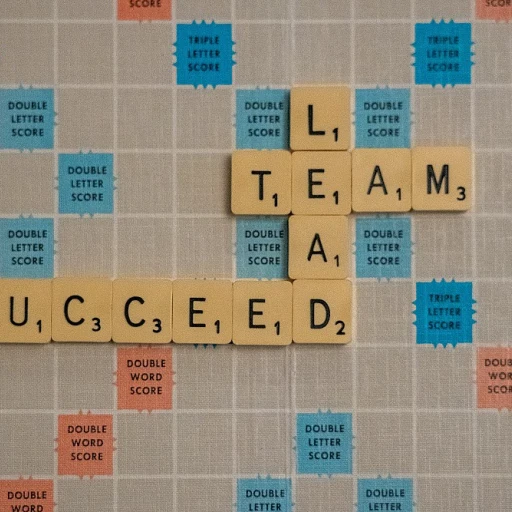Understanding the Current Hiring Landscape
Getting to Grips with Modern Hiring Tactics
In recent times, the hiring process has become a real juggling act for many companies. It's not just about welcoming new faces anymore. Companies are grappling with attracting top talent while maintaining a smooth recruitment process. The pandemic's impact on employment and the rise of remote jobs has flipped hiring strategies on their heads. It’s now common to find candidates juggling multiple offers at once, making it crucial for companies to make swift and informed decisions. A study by Glassdoor highlights that hiring times have lengthened by 10 days since 2010. In sectors such as engineering and finance, the time it takes to hire can extend over 50 days. With such delays, companies might miss out on the top talent they need. It's evident that firms now need more than just traditional recruitment methods to stay ahead. The steps to beef up the hiring process are simple yet impactful. For instance, streamlining communication not only speeds things up but also enhances the overall experience for potential hires. Nobody likes to be left hanging, and better communication can cultivate legitimacy and appeal around a job offer. High-speed recruitment isn't just about urgency; it's about adapting to the new rhythm of hiring. Emphasizing speed without compromising quality can make all the difference. The struggle is real, but with strategic tweaks, your company can keep pace. Searching for ways to handle high-volume hiring? Check out the art of high-volume hiring for insights and tips. From the tech tools that cut hiring timelines to the revamped job descriptions that attract the right crowd, the dynamics of hiring are evolving. By keeping tabs on what's working and where improvement is needed, companies can stay one step ahead in this competitive hiring scene. Stay tuned as we delve into more ways to supercharge your company's hiring experience.Implementing Technology for Speed
Speeding Up Recruitment with Smart Tech
The modern era demands that businesses step up their game. Thankfully, technology offers tools that not only make hiring speedy but also smarter. Companies worldwide now embrace AI in the recruitment process, leveraging it for screening resumes and scheduling interviews. AI doesn’t just boost speed; it offers unbiased screening, ensuring that only the best candidates reach the top of your stack. Chatbots are proving to be invaluable, handling candidate queries promptly and freeing up human HR resources for more critical decision-making tasks. This tech-driven approach helps organizations cut down the time from job posting to hiring, sometimes by weeks. The outcome? Companies not only save precious time but also enhance their talent pool by ensuring a wider and more diverse range of candidates. For more advanced insights, take a look at the navigating the hiring journey in tech roles.Improving Communication: The Cornerstone of Fast Hiring
There’s nothing more frustrating for candidates than radio silence. Frequent and clear communication is fundamental in hiring. By implementing structured communication plans, your company can set expectations, keep candidates informed, and reduce anxiety. Using platforms like Slack or Microsoft Teams for internal communication ensures your team stays on the same page. For external communication, a well-timed email or a quick phone call can make a world of difference for candidates waiting for updates. Integrating communication tools directly into your recruitment software is growing in popularity, helping streamline the back-and-forth—meaning both your team and the potential hire are happy campers.Crafting Effective Job Descriptions
Many companies underestimate the power of a well-written job description. This is your first point of contact with a candidate, and it needs to be spot-on. Clear, concise, and genuine descriptions will not only attract talent but also ensure the right people apply. Use language that accurately reflects your company culture. Be transparent about job expectations, roles, and career paths. Optimizing your job description for search engines is another trick up the sleeve for attracting skilled individuals looking for their next opportunity. This kind of targeted approach amplifies your reach and gets your job listing in front of the right people. The investment in plain-language, targeted descriptions will yield better candidates who are a better fit for the role, reducing the number of unsuitable candidates and streamlining the entire hiring process.It's All About the Interview
Interview processes can make or break your recruitment efforts. Revamping these to suit the needs of both the company and the candidate is fundamental. Think structured interviews, panel interviews, or even group interviews as ways to best evaluate skills and fit. Use a mix of virtual and in-person settings to optimize time and resources. Incorporate scenario-based questions to get a real sense of the candidate’s decision-making abilities. Companies increasingly use tech-driven assessments, which offer a quicker way to evaluate a candidate's competencies and can be done remotely. The right interview process is also respectful of a candidate’s time, ensuring they feel valued and engaged. This approach not only speeds up hiring but leaves potential employees with a positive impression of the company, even if they don’t make the final cut. This practical approach to tech-driven hiring will launch your recruitment process into new efficiencies. So buckle up; your next top talent might be closer than you think.Streamlining Communication
Effective Communication: The Bridge to Better Hiring
In the hiring process, communication can either be your best friend or your worst enemy. When things click, great candidates glide through interviews, feel appreciated, and believe that this company is the right place for them. But when there's a struggle? It slows everything down. Imagine this: a top talent drops out because they felt left out of the loop. In an era where everything goes at lightning speed, keeping candidates engaged and informed is not just polite—it's necessary.- Clear Paths of Communication: As you reach out to candidates, ensure there's a clear line to follow. Let them know the timeline, like when to expect a response or the next steps after interviews.
- Use the Right Tools: Embrace technology to streamline candidate interactions. Tools like collaborative platforms can keep recruiters and potential hires on the same page. Think about using communication platforms that allow for quick feedback—this can give your hiring speed a real boost.
- Feedback Loop: Offer candidates constructive feedback after interviews. This not only assures them that they were considered seriously, but it also strengthens your company's reputation.
Optimizing Job Descriptions and Requirements
Crafting Job Descriptions That Attract Talent
Writing job descriptions might seem like a mundane task, but it's where the magic begins in the hiring process. A well-written job description is your company's first handshake with potential candidates. It's your chance to communicate what you're looking for and what you offer. Think of it as a dating profile, but for jobs. You want to be clear, concise, and a little bit charming.
Start by being specific about the role. Avoid jargon and buzzwords that can confuse candidates. Instead, use straightforward language to describe the responsibilities and qualifications. This not only speeds up the recruiting process but also helps candidates self-assess their fit for the role, saving everyone time. Remember, clarity is key in attracting the right talent.
Aligning Expectations with Requirements
It's important to align job descriptions with the actual needs of the position. Overstating requirements can deter great candidates who may not tick every box but could excel in the role. On the flip side, underselling the job might attract candidates who aren't quite up to the task. Striking the right balance is crucial for effective recruitment.
Consider involving team members who currently hold or closely work with the position in question. Their insights can be invaluable in painting an accurate picture of the job. This collaborative approach not only enriches the job description but also fosters a sense of ownership and engagement among your team.
Using Job Descriptions to Enhance Decision Making
Job descriptions aren't just for candidates; they're a tool for your hiring team too. They provide a benchmark for evaluating candidates during interviews, helping to keep the process objective and consistent. By clearly defining what success looks like in the role, you can streamline decision-making and ensure you're hiring the best fit for your company.
Incorporating clear job descriptions into your hiring process can significantly improve the speed and quality of your recruitment efforts. It's about setting the stage for a smooth, efficient hiring experience that benefits both the company and the candidates.












